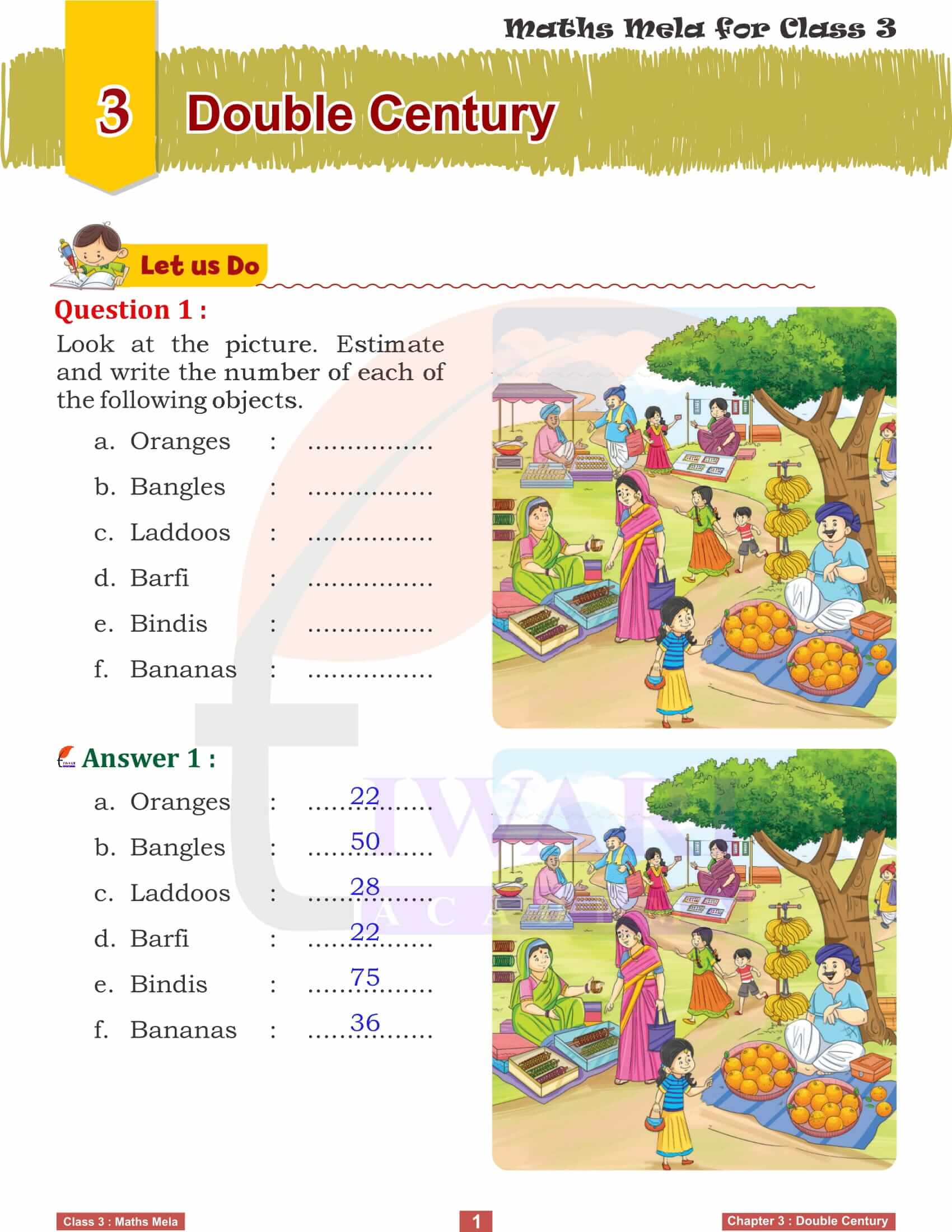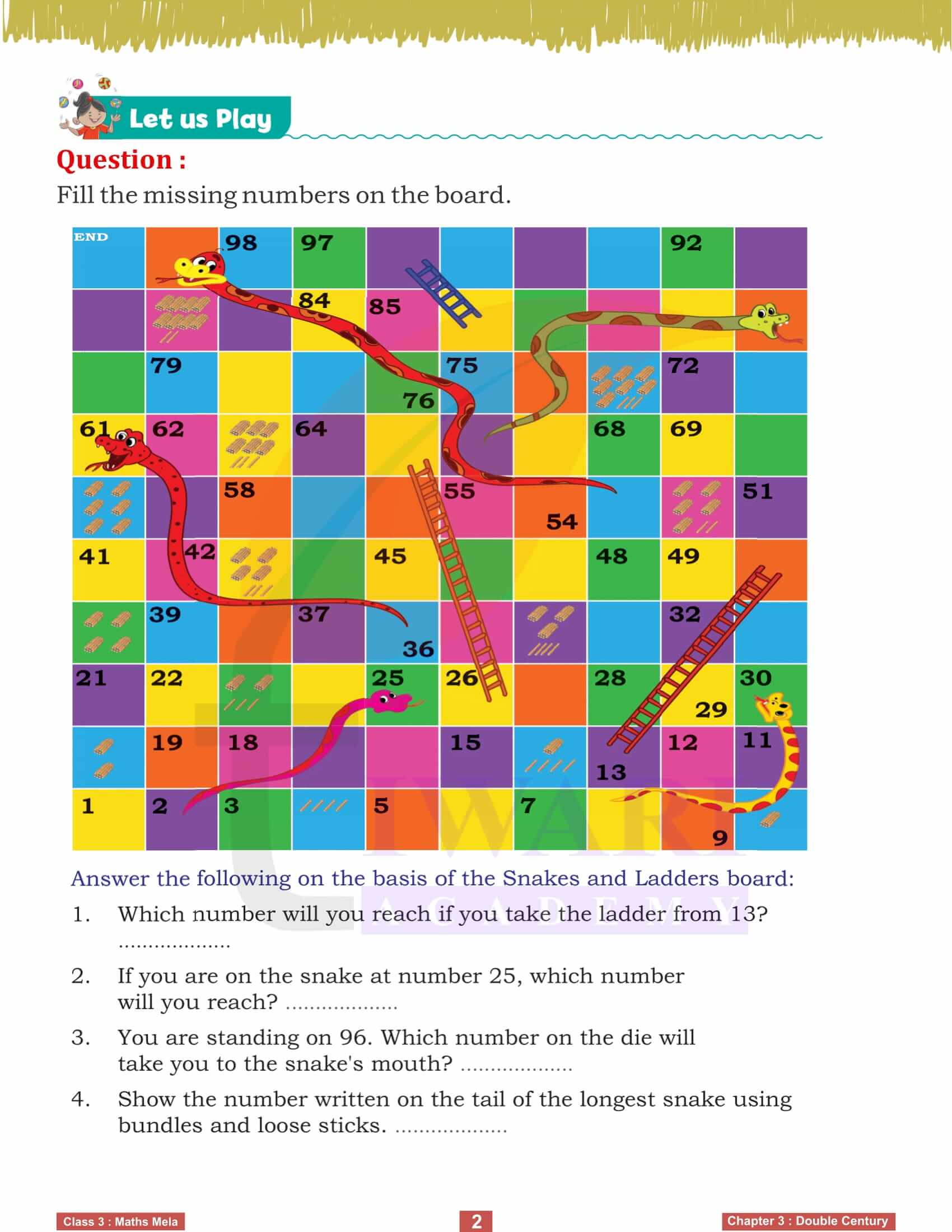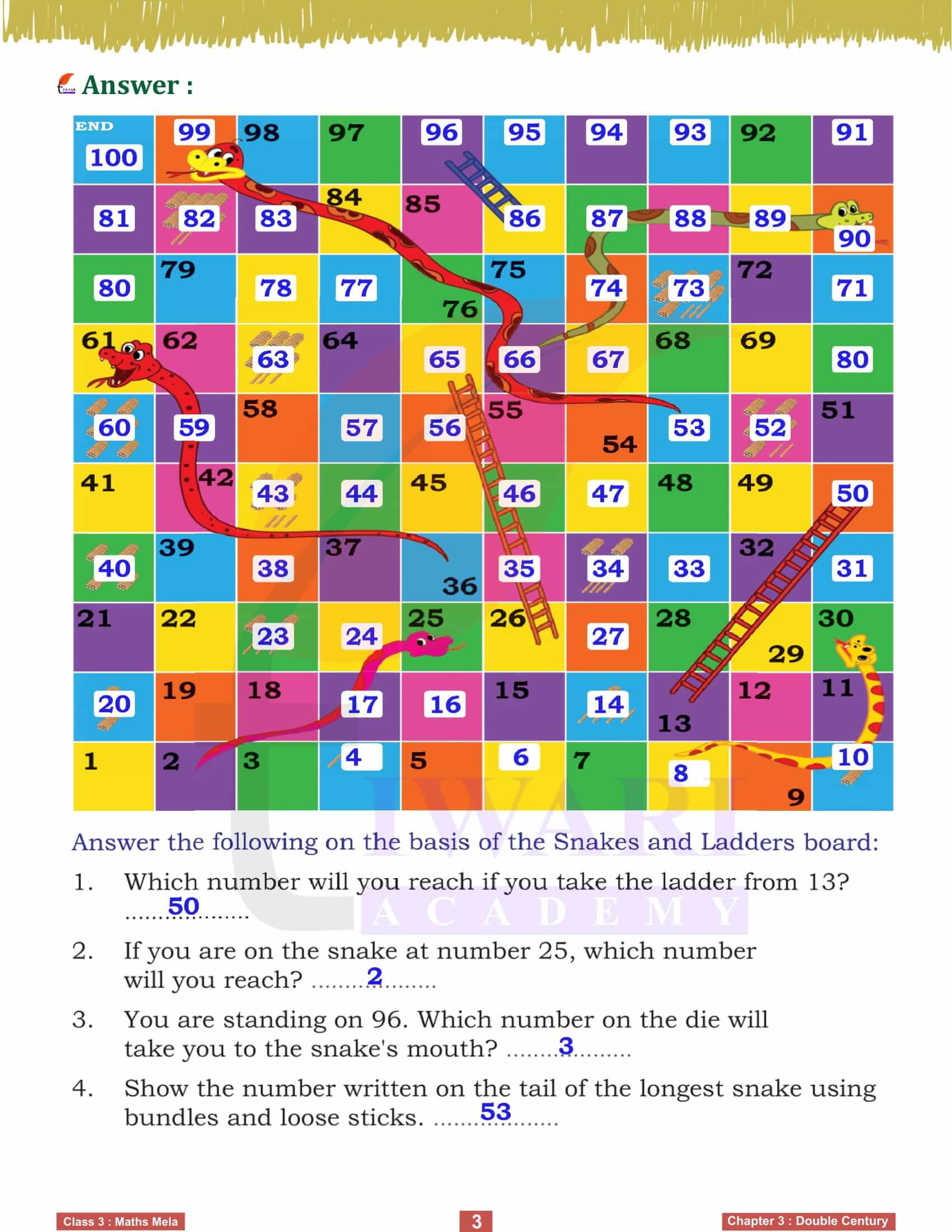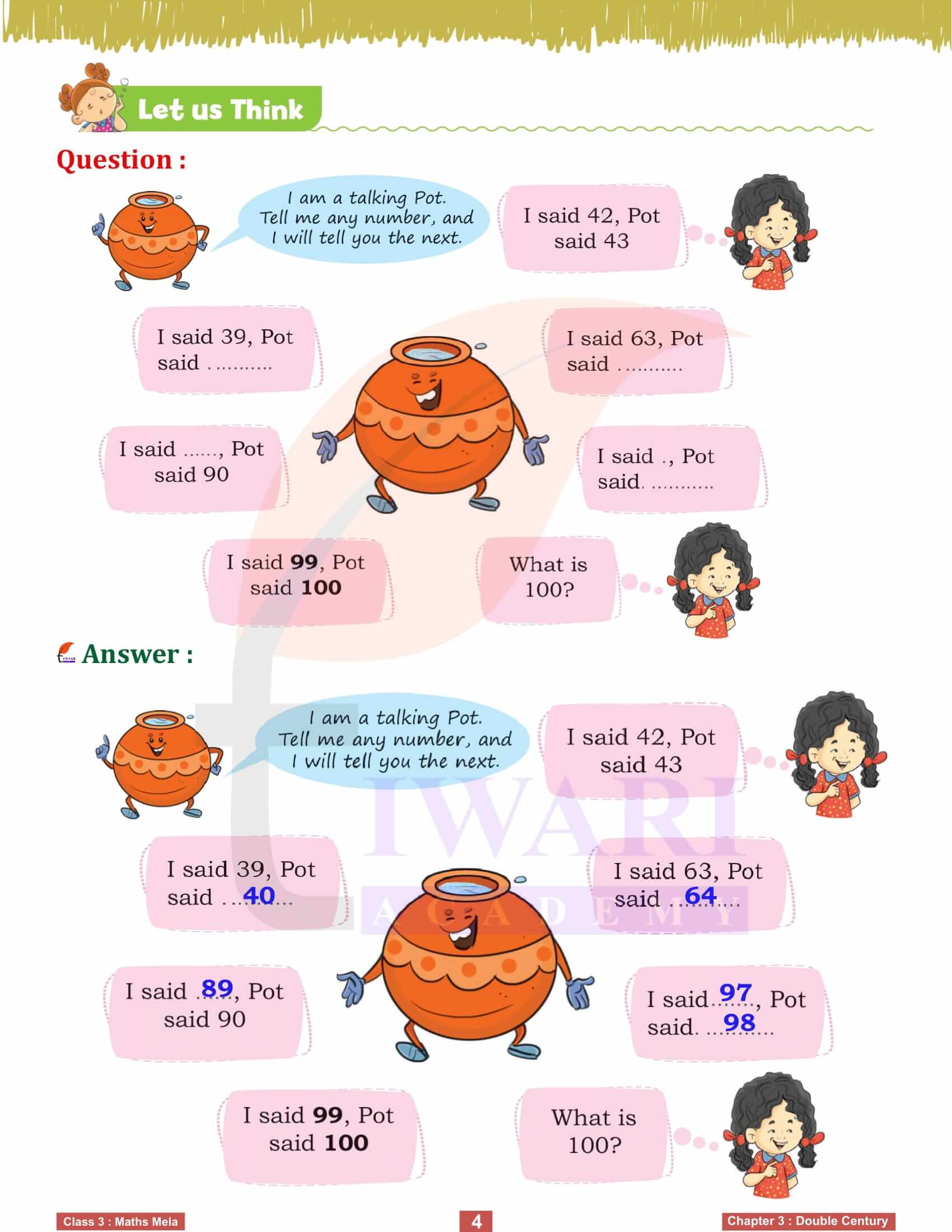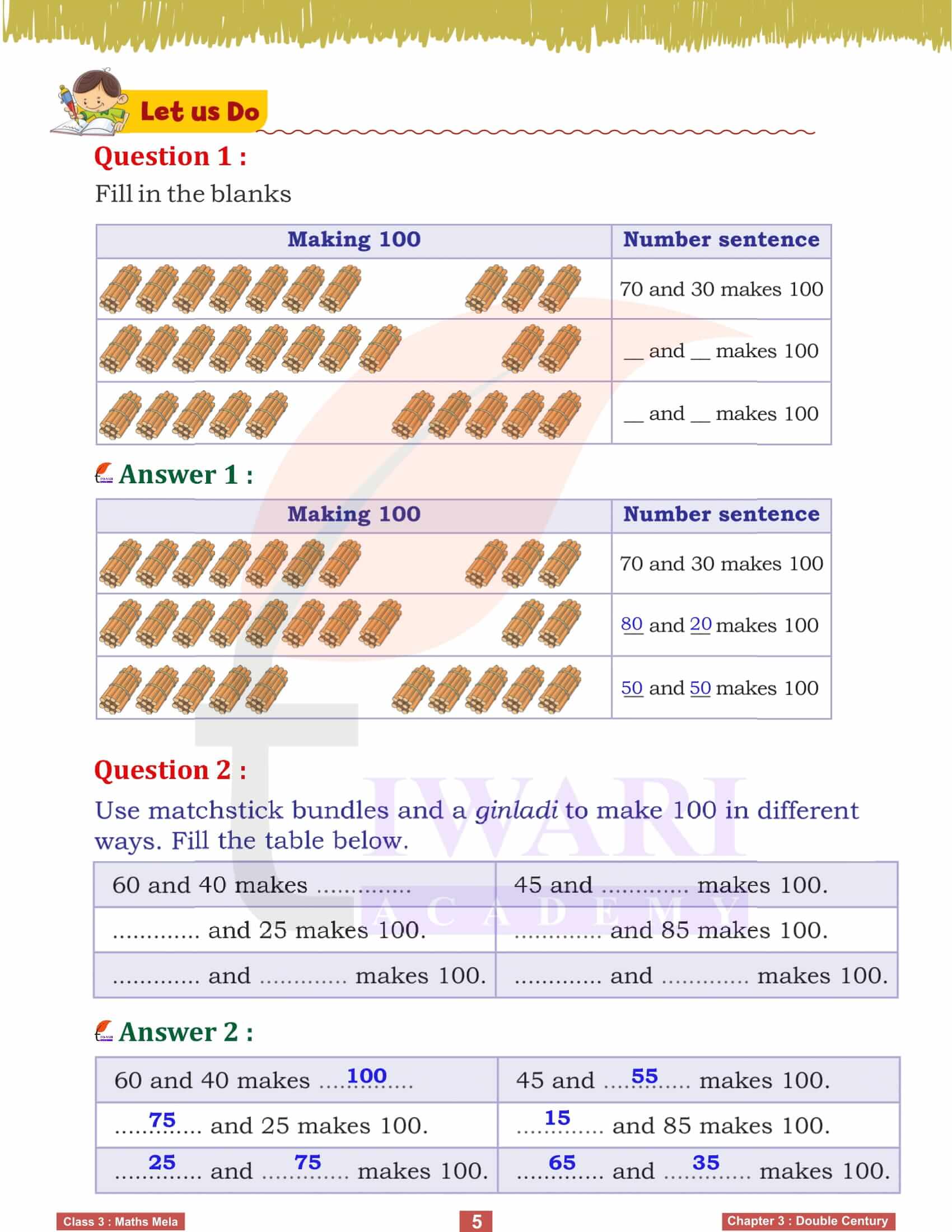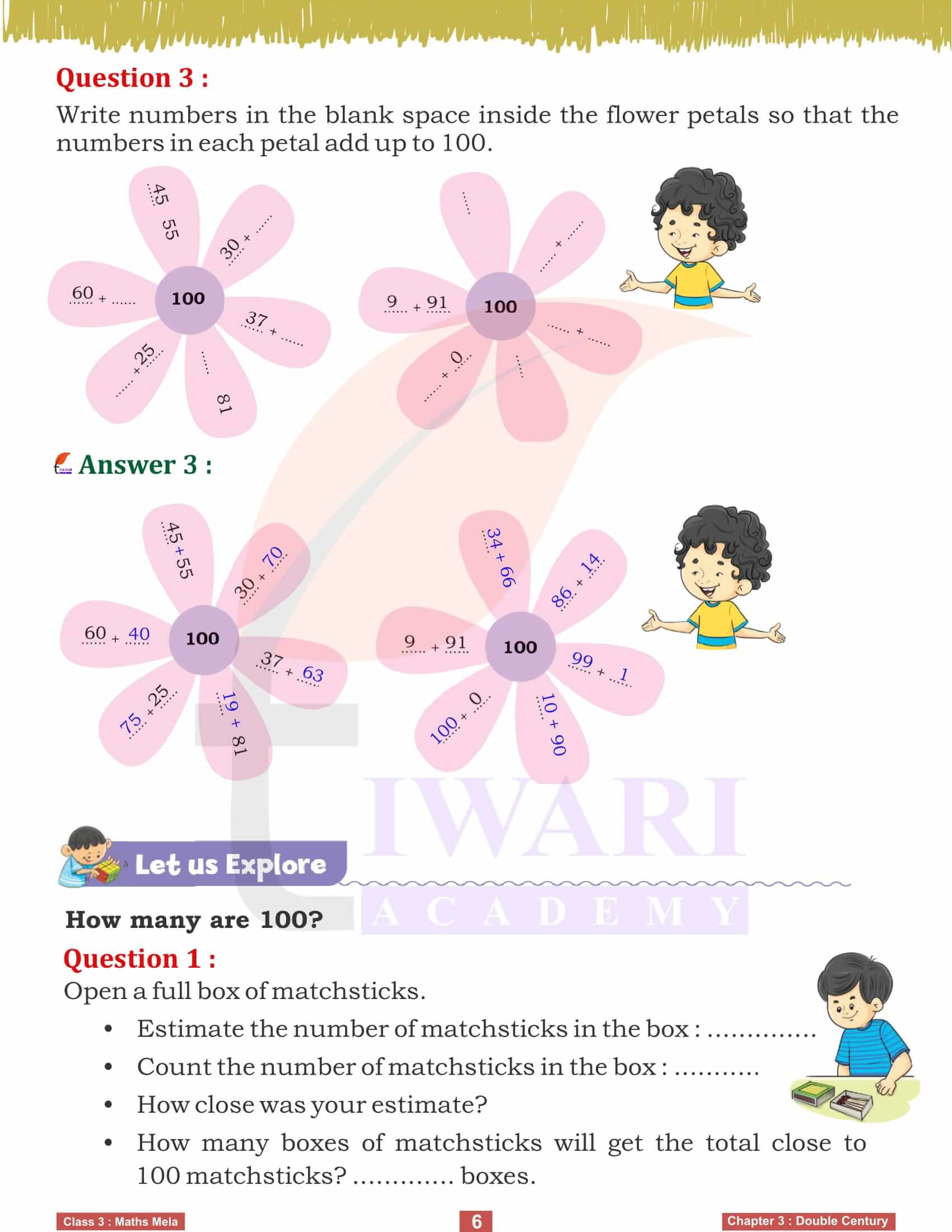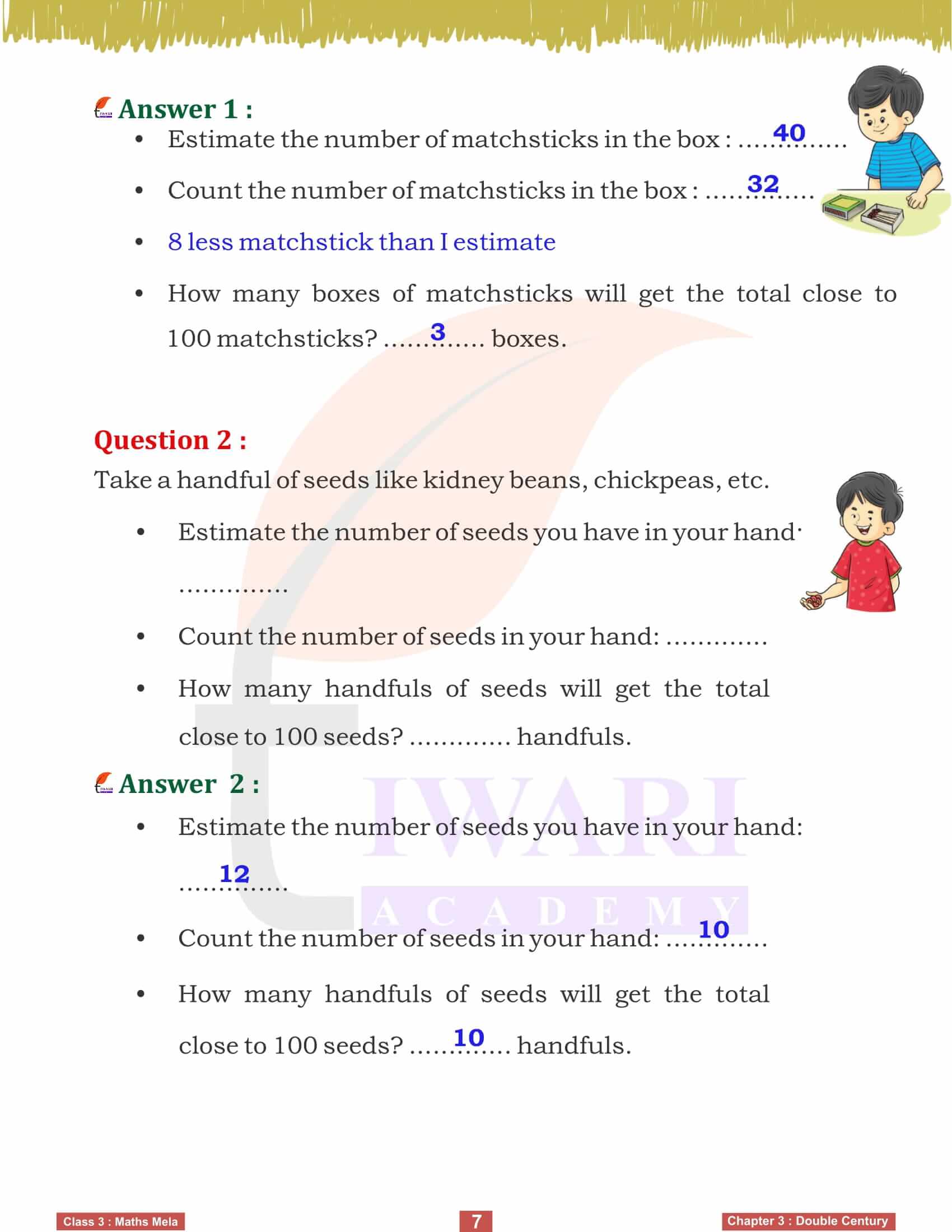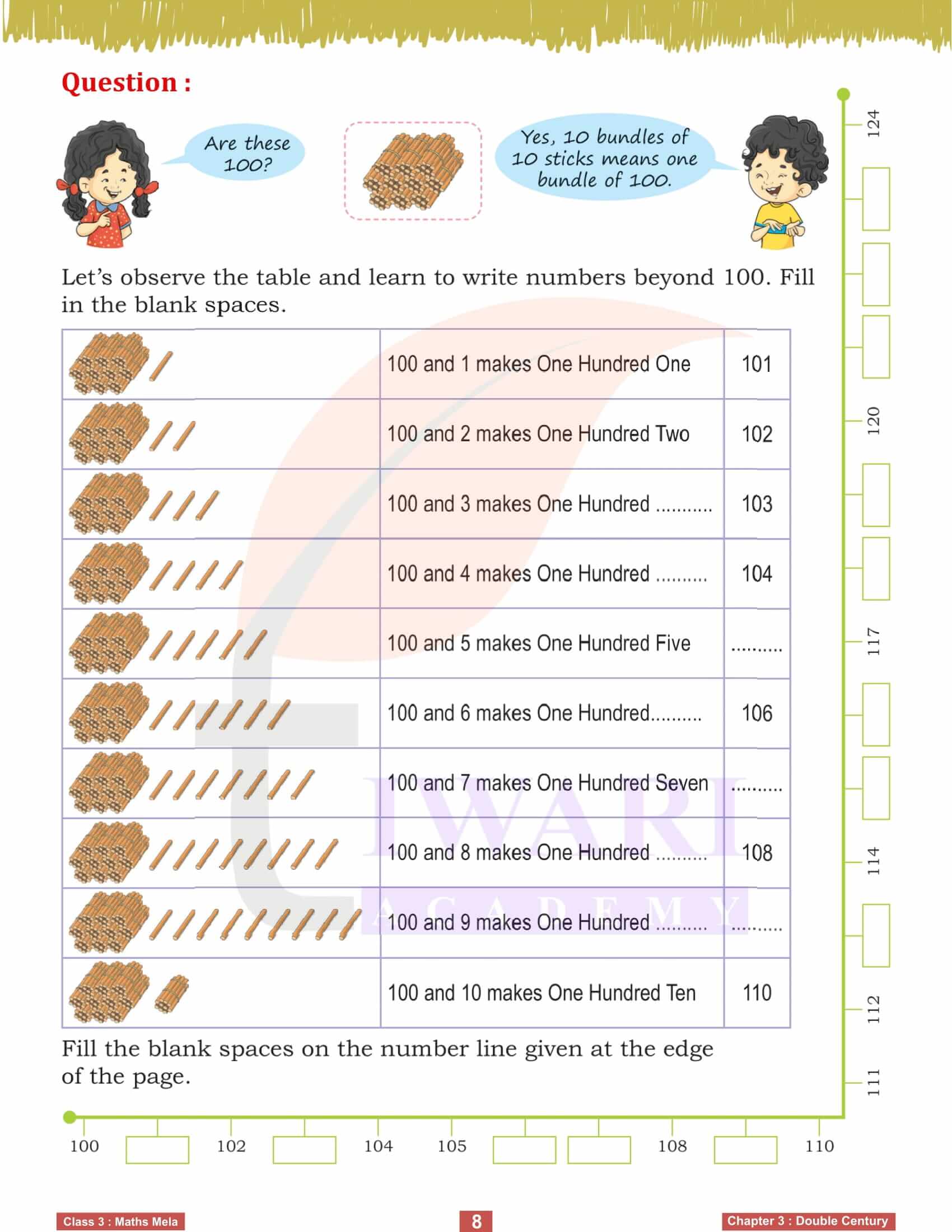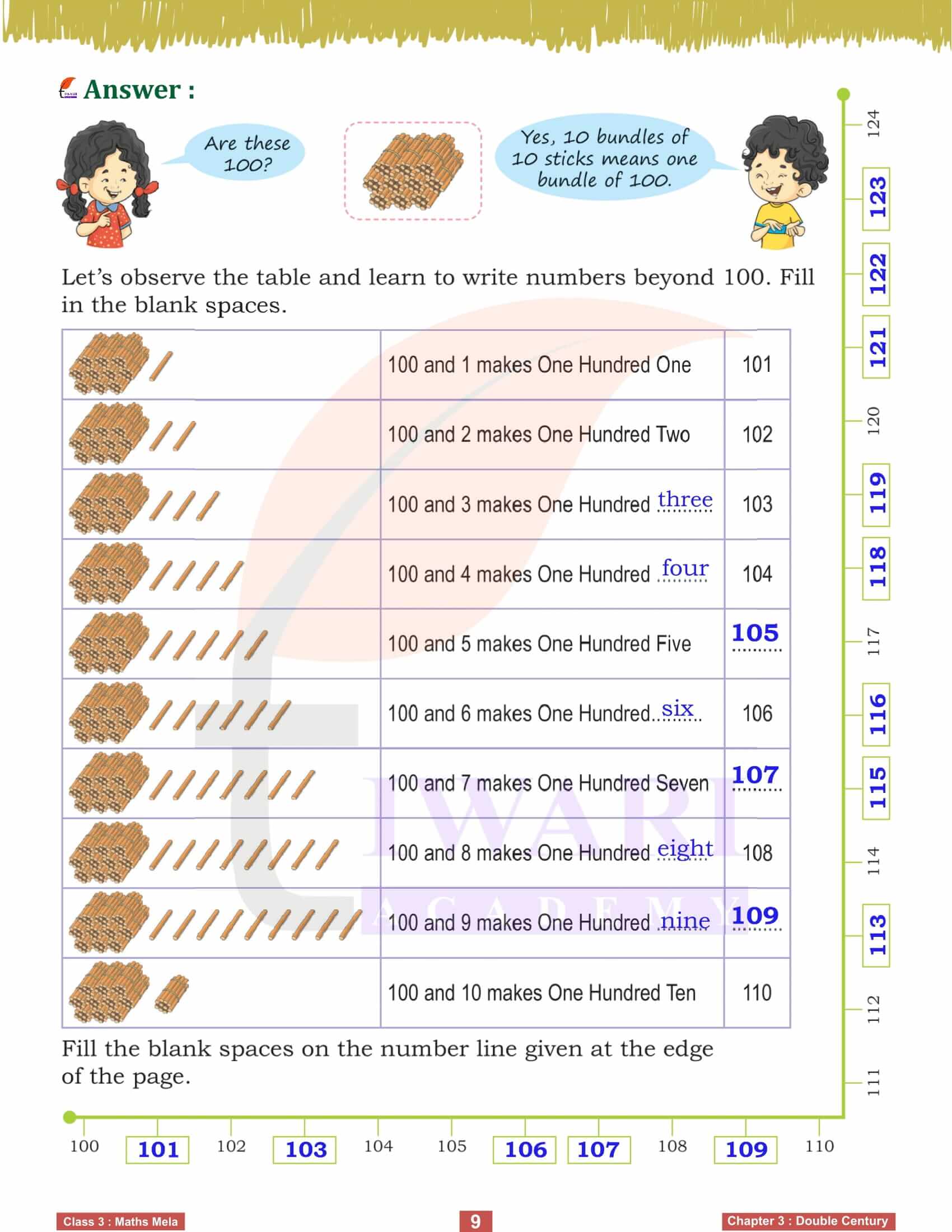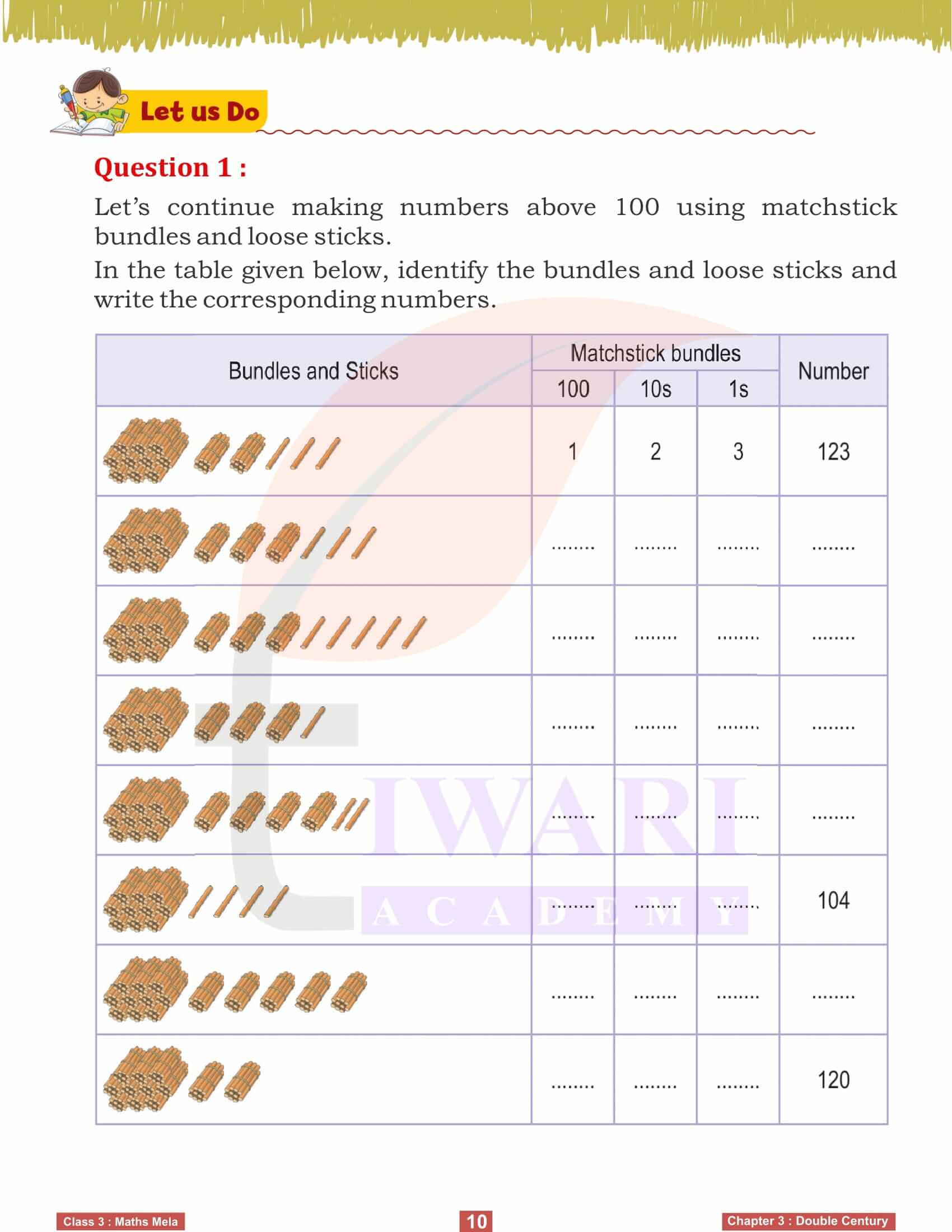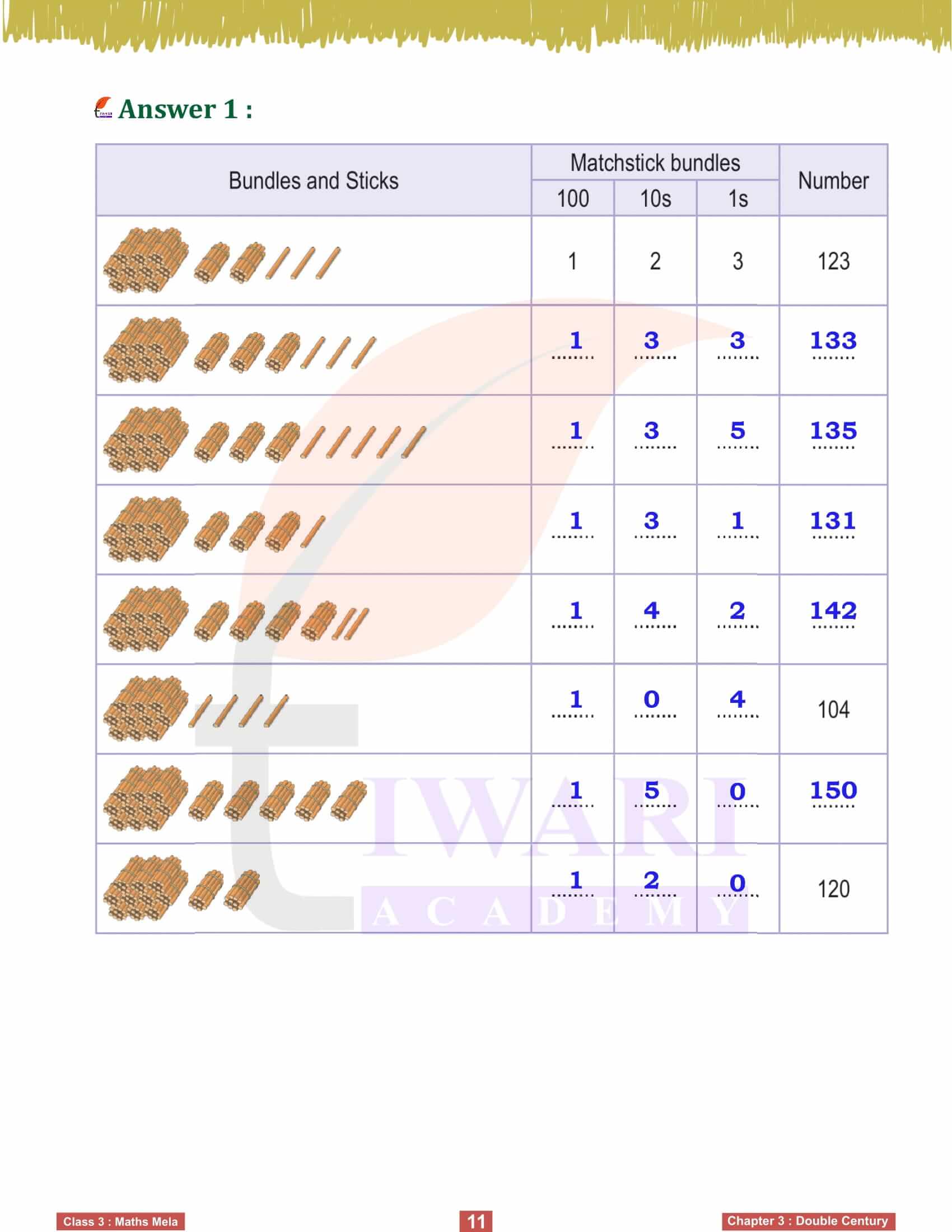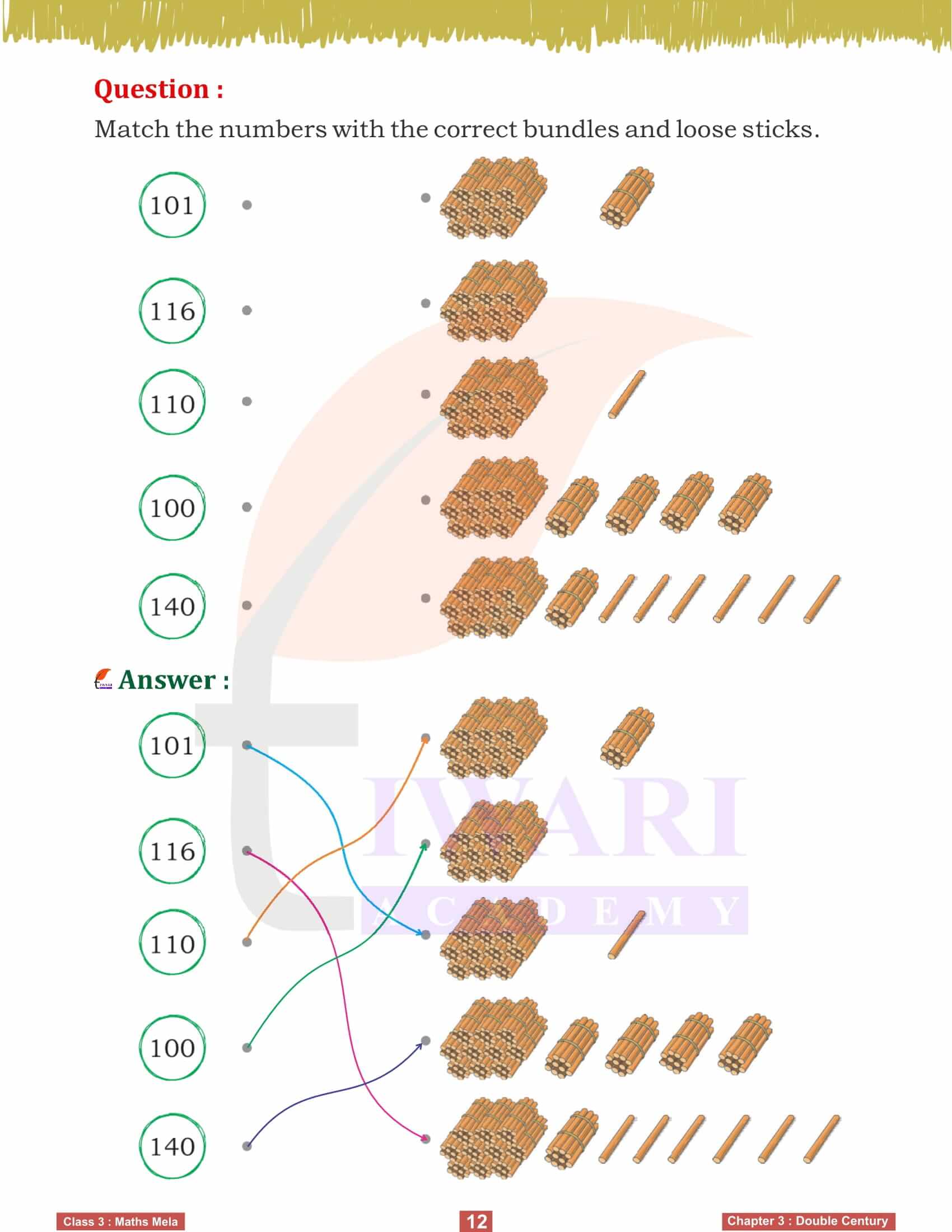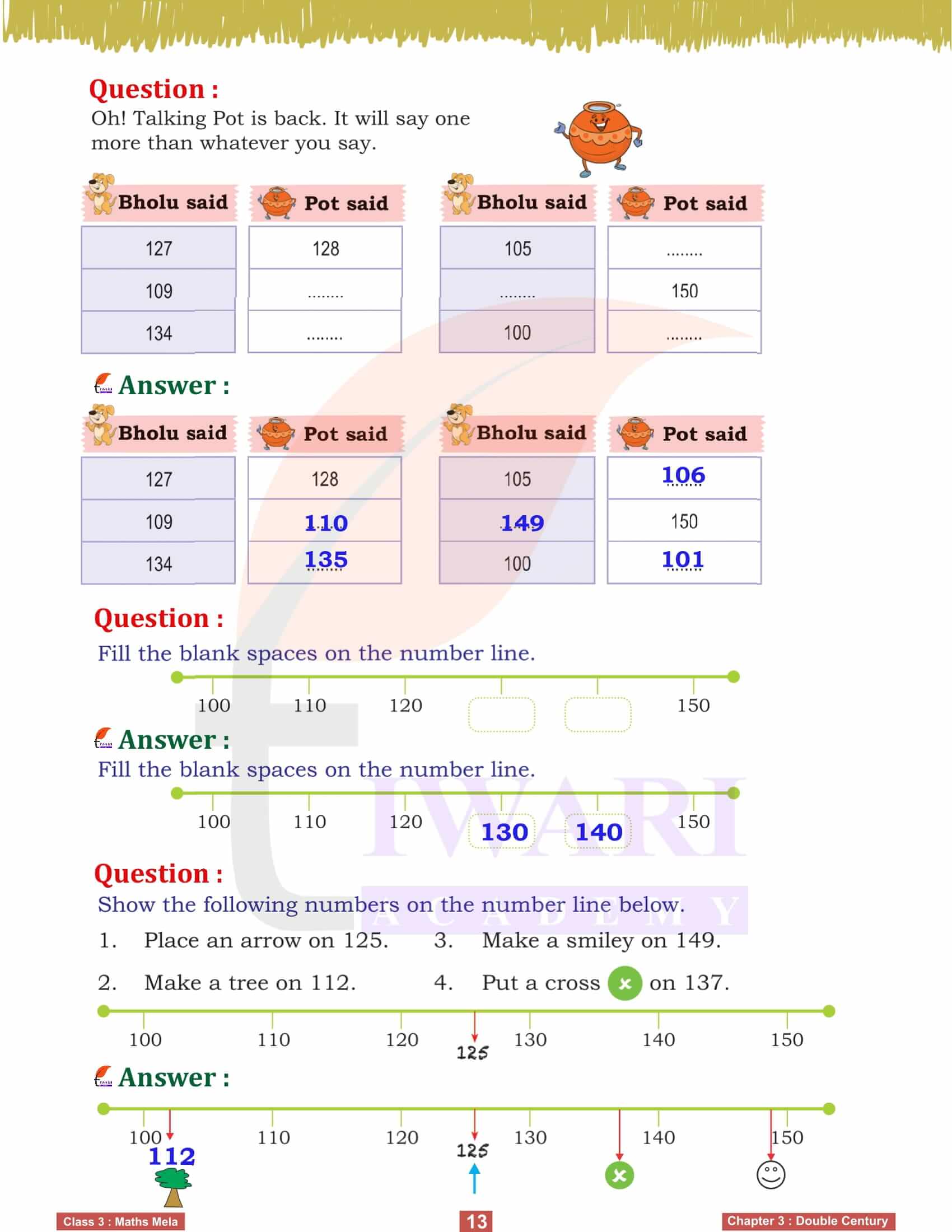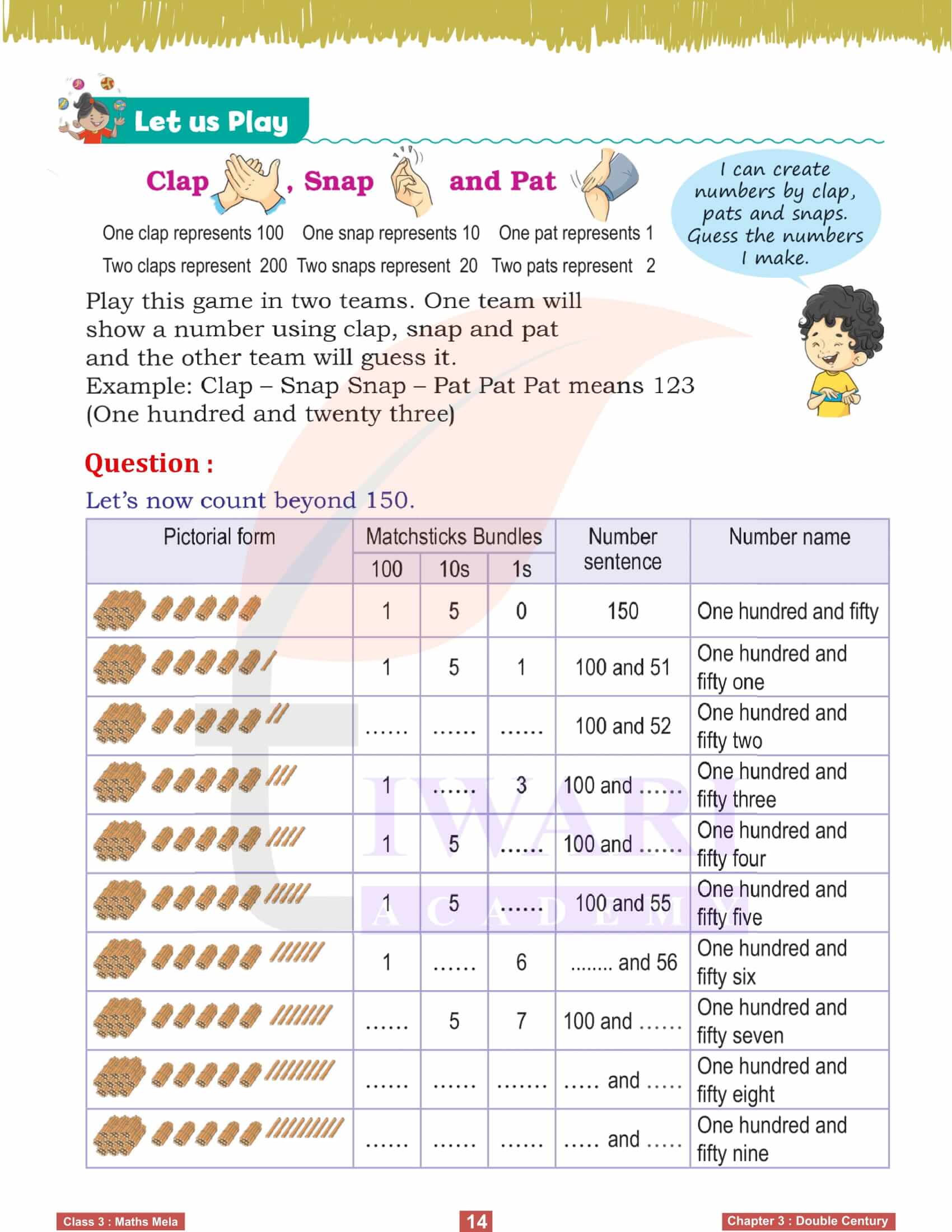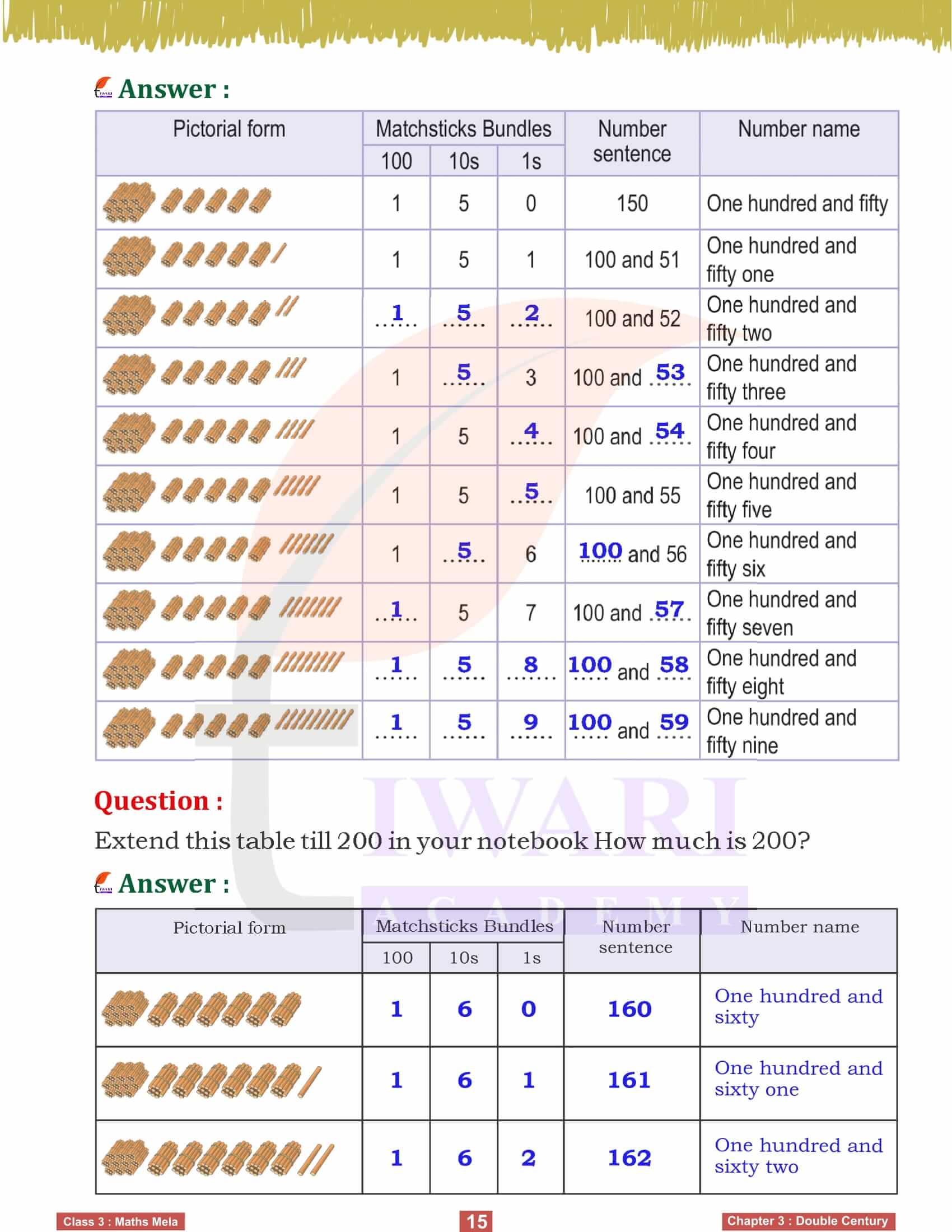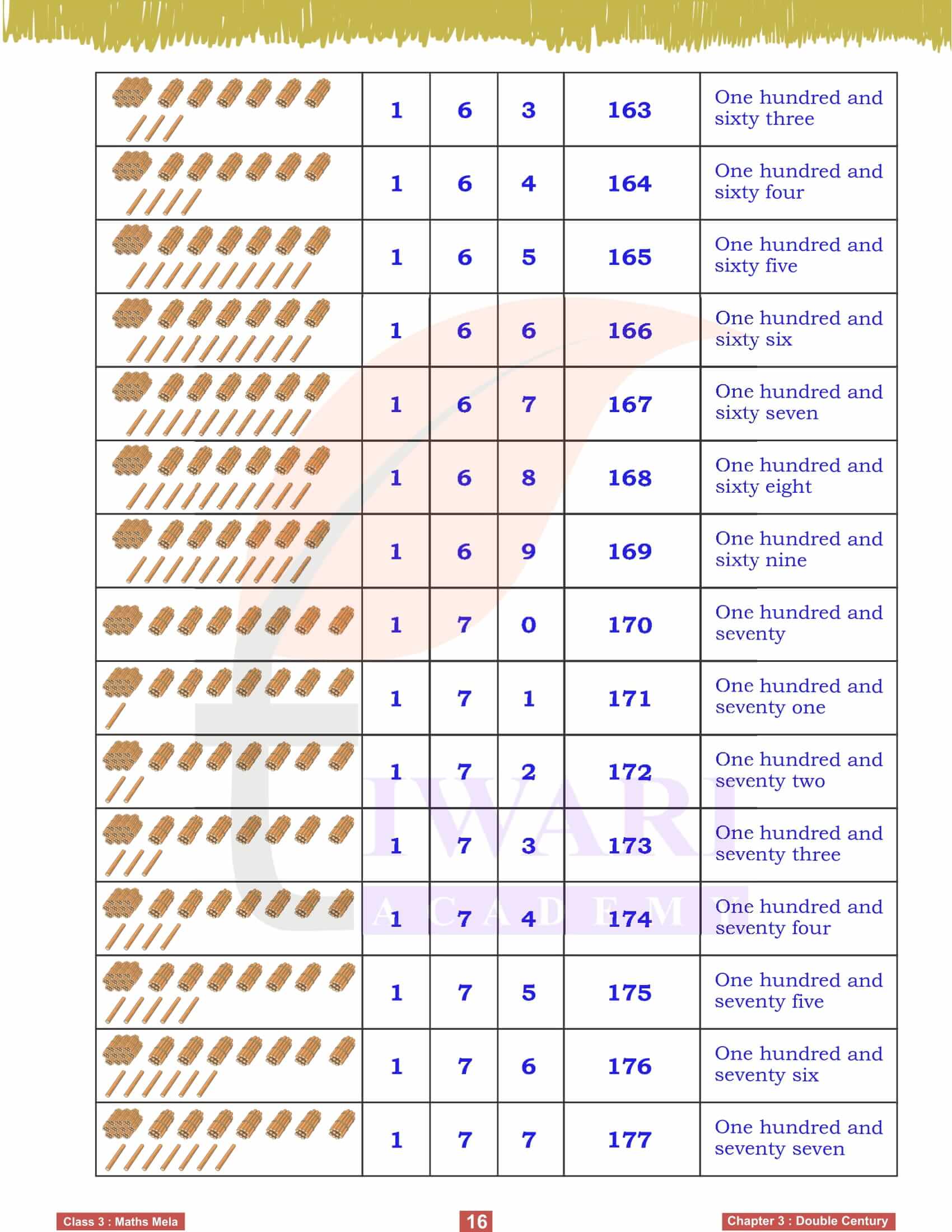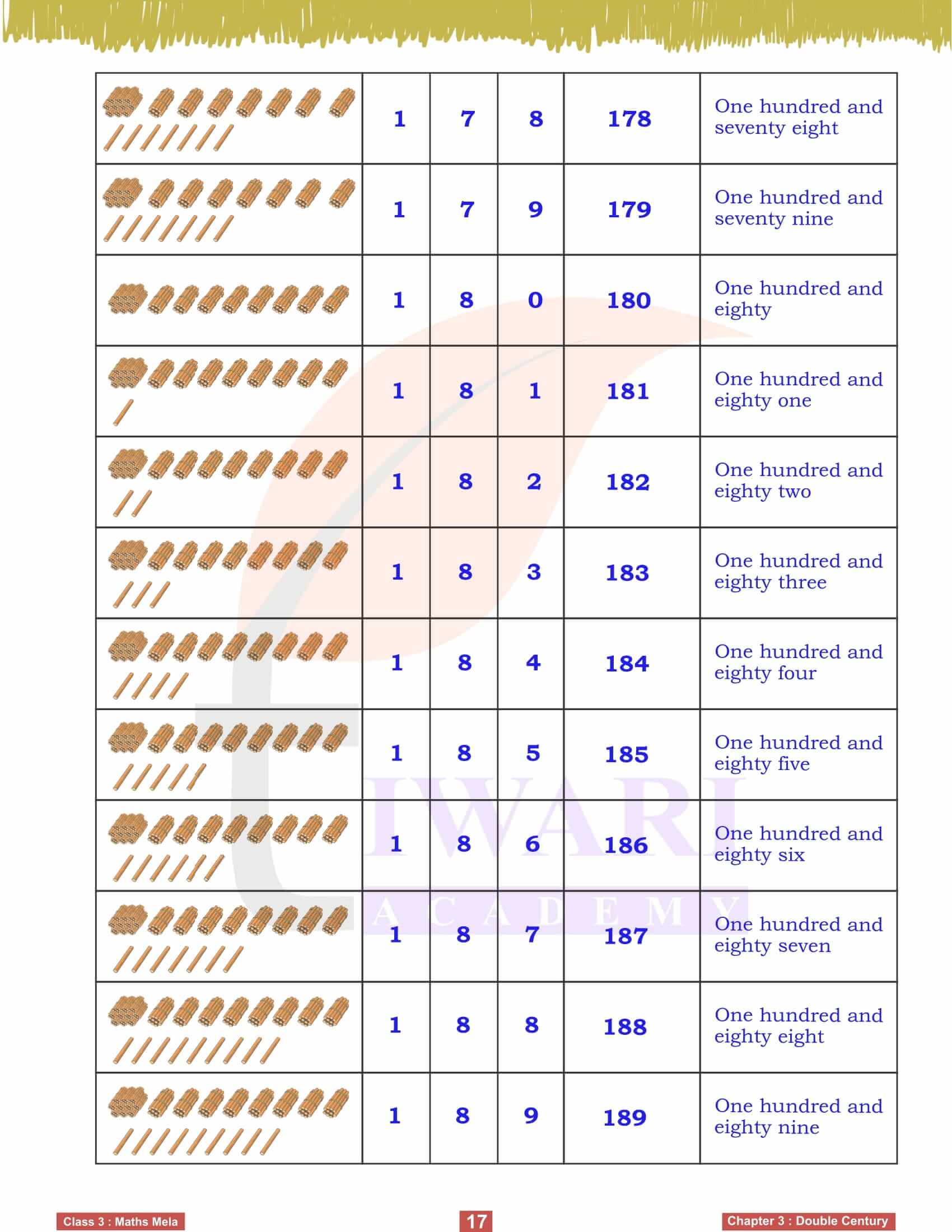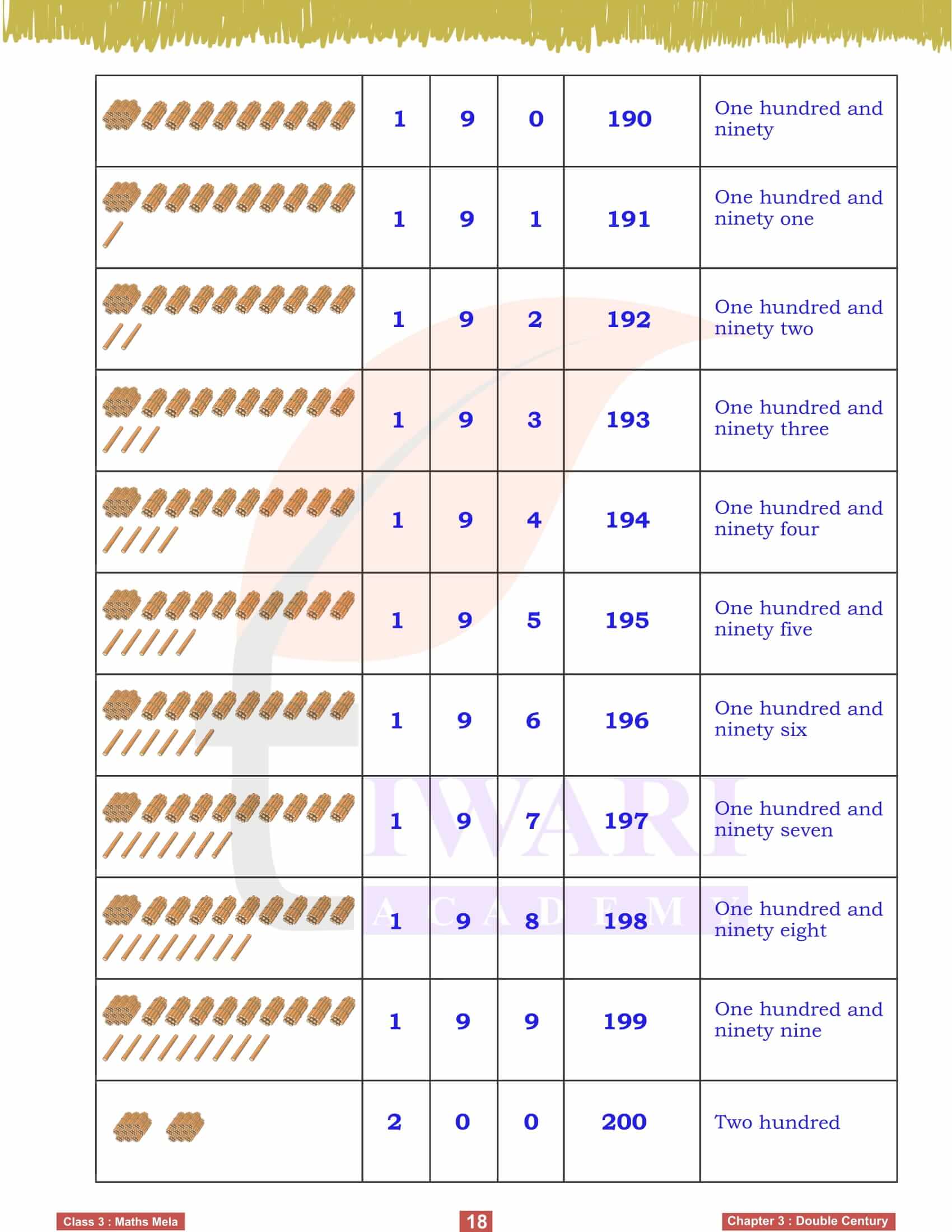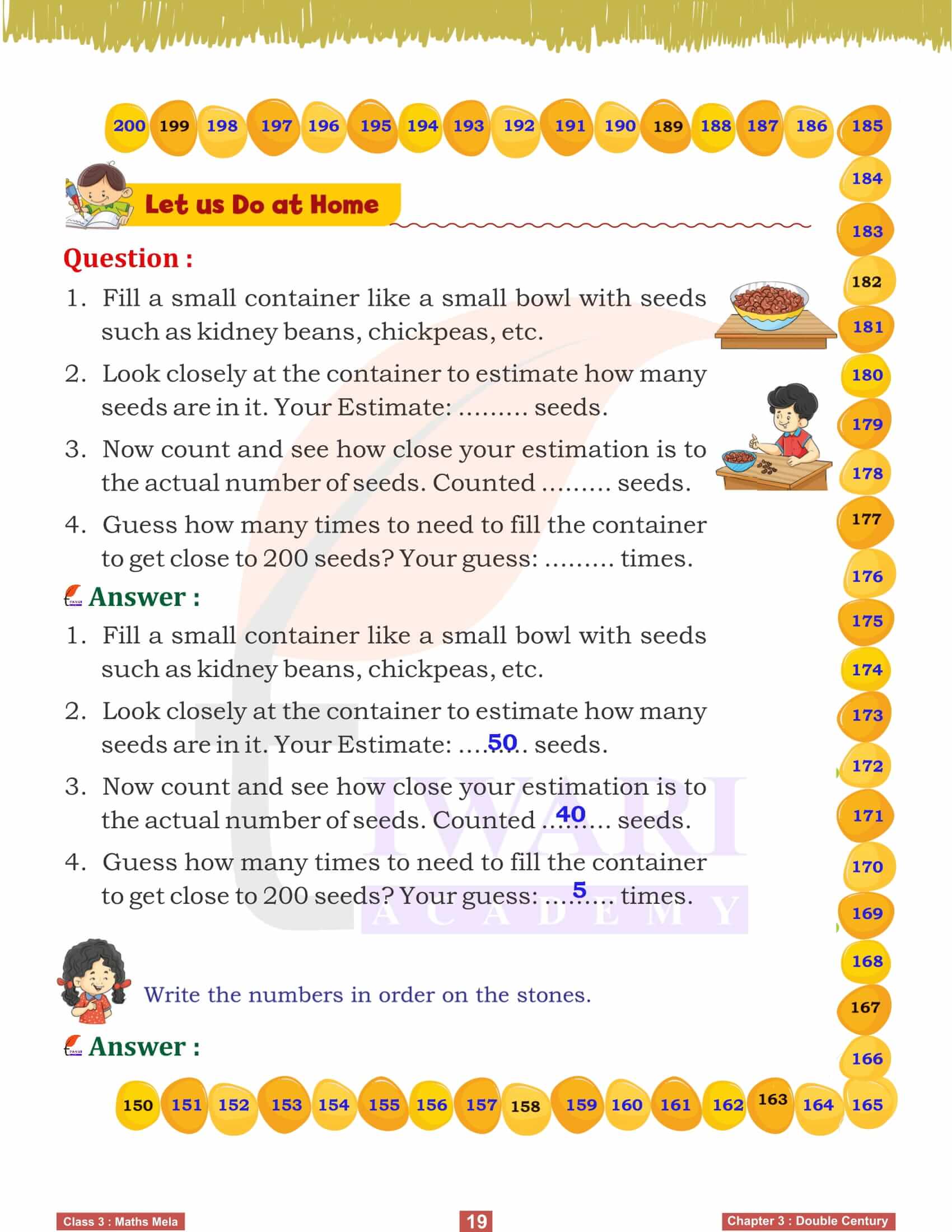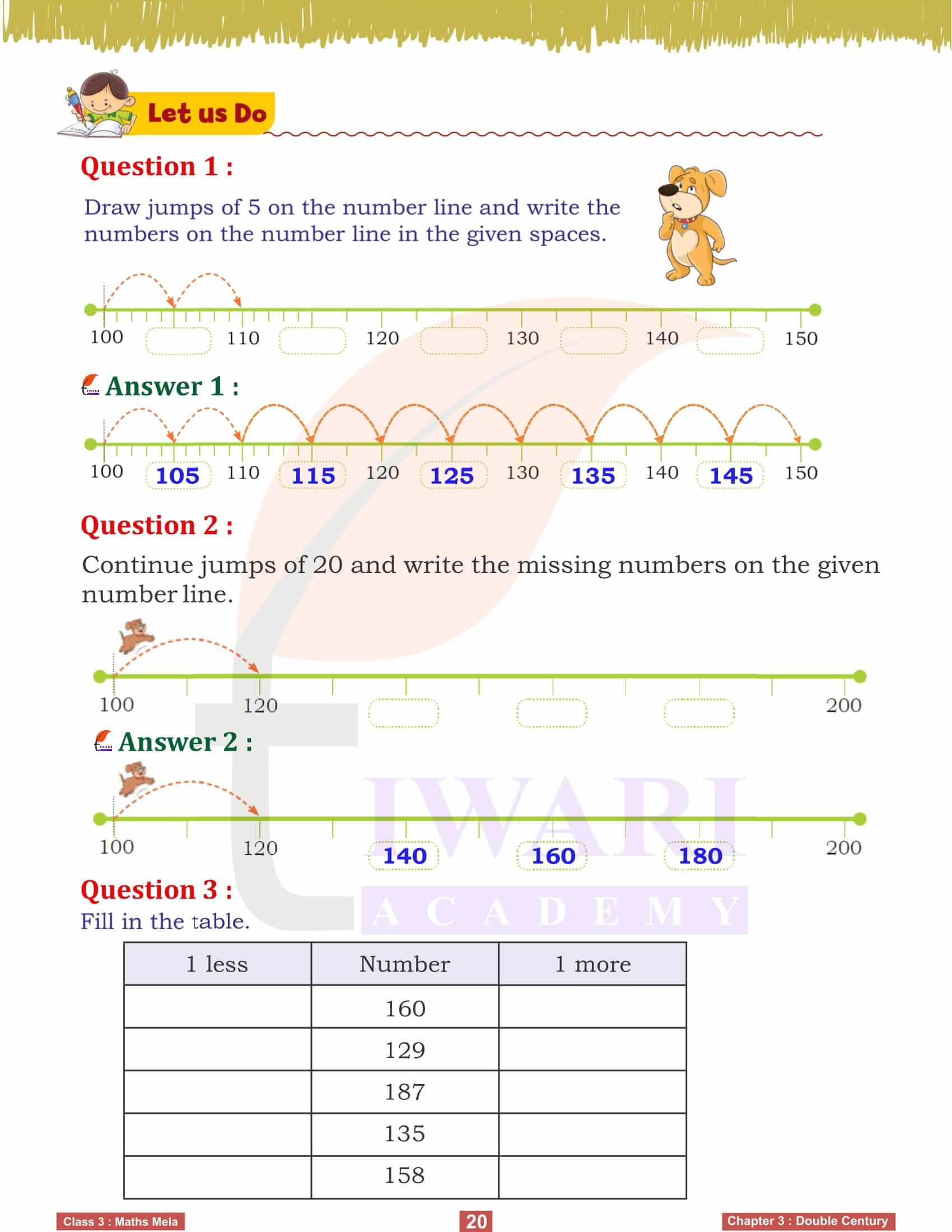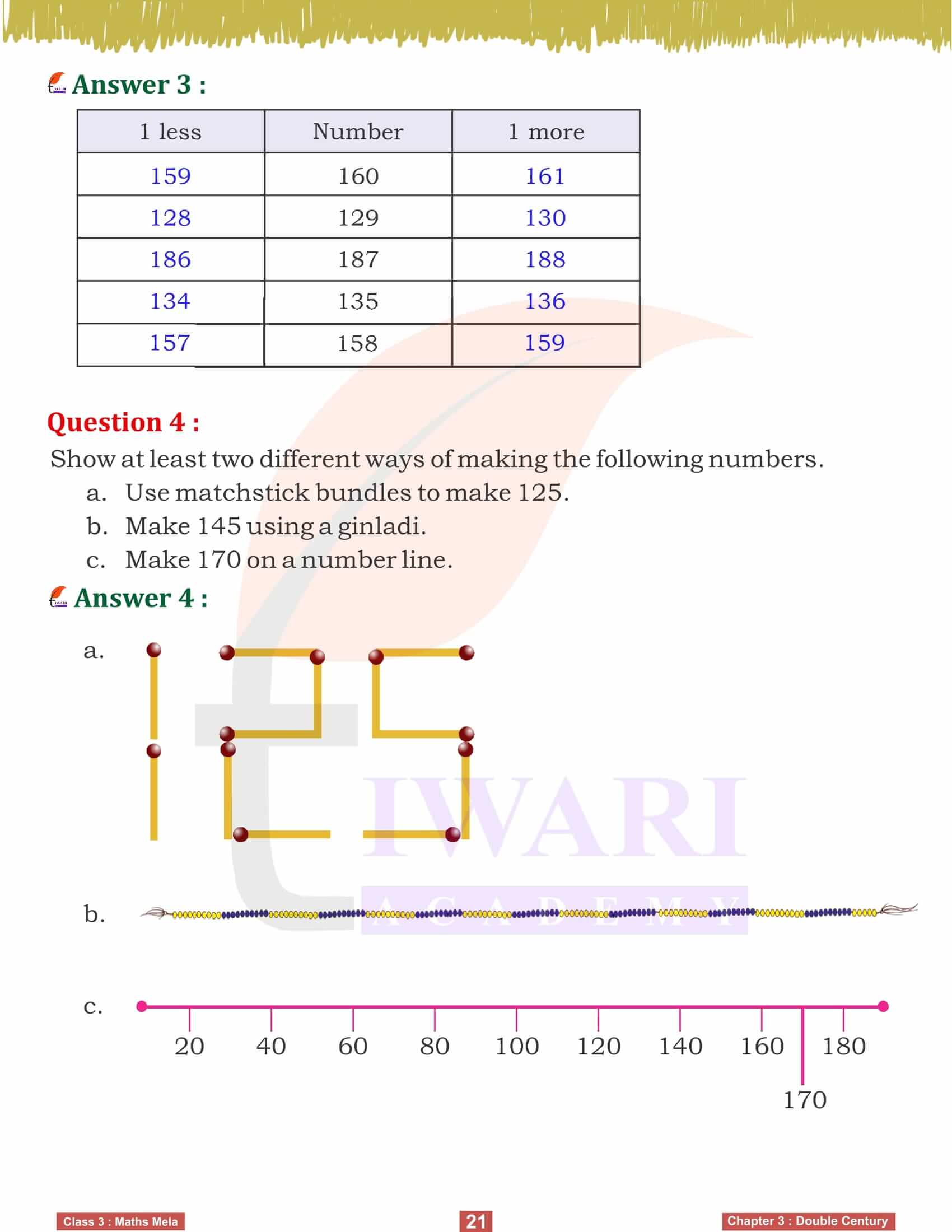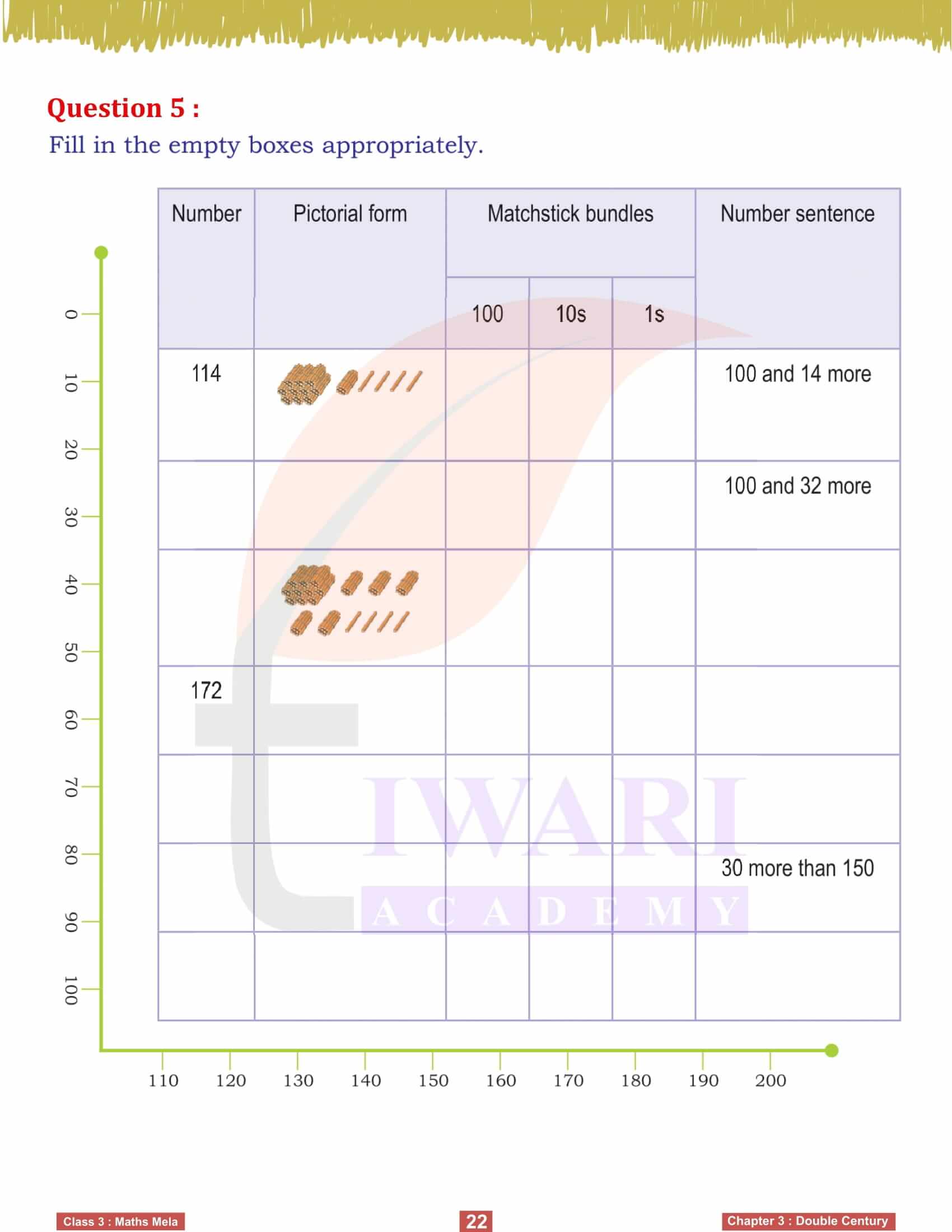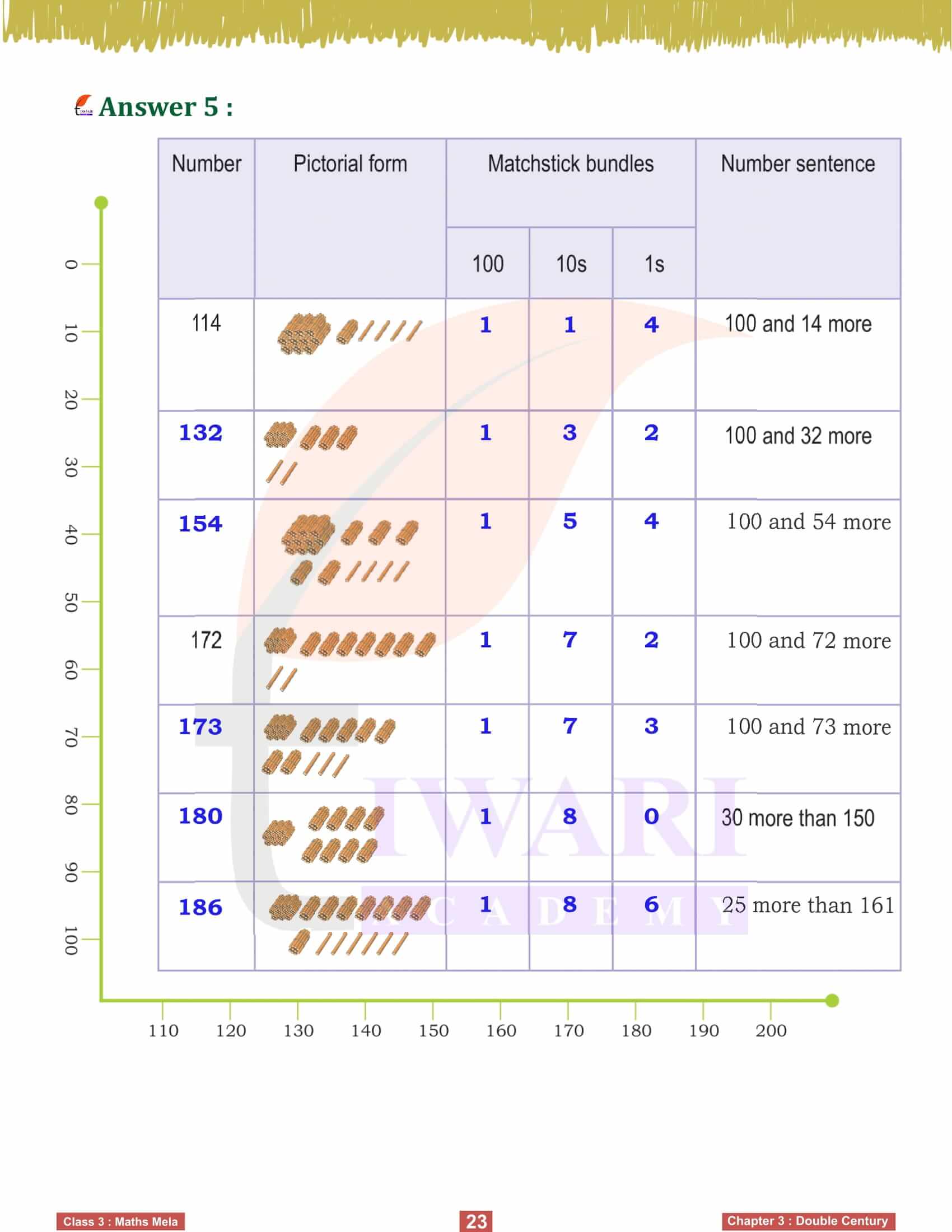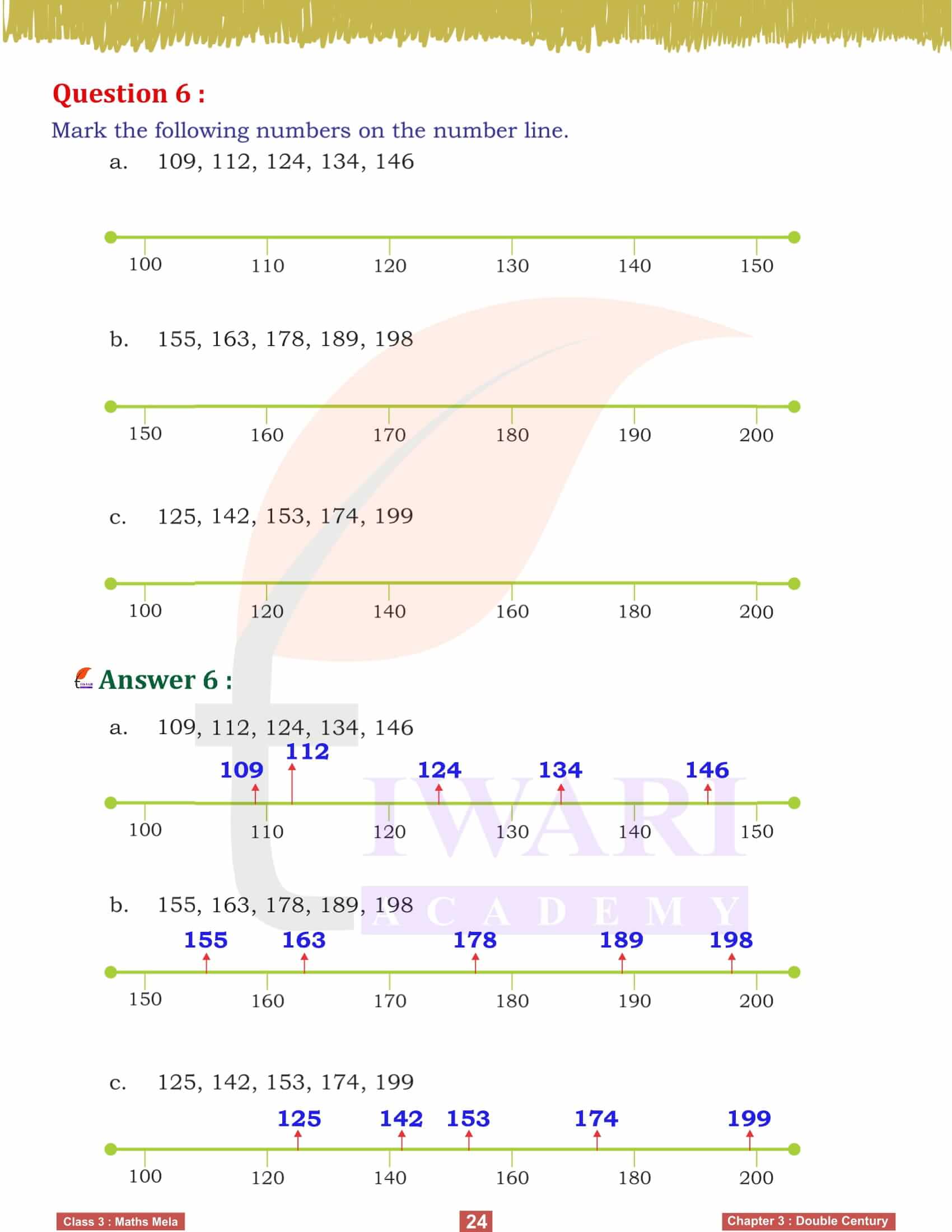NCERT Solutions for Class 3 Maths Mela Chapter 3 Double Century in Hindi and English Medium revised and updated for session 2025-26. Chapter 3 introduces students to the concept of large numbers, specifically up to 200. Through stories and practical examples, students learn to read, write and compare these numbers. Activities include counting objects, filling number grids and understanding place value, making large numbers approachable and fun.
Time Schedule for Class 3 Maths
The History of Numbers
In Chapter 3, Double Century, we start by diving into the fascinating history of numbers. Tens of thousands of years ago, people began counting to keep track of their belongings. They used marks on cave walls and tree barks to record these counts. Over time, different civilizations developed their own systems for grouping and recording numbers. The ancient Indians made a significant breakthrough by creating a method to write any number, regardless of its size, using only ten symbols: 0, 1, 2, 3, 4, 5, 6, 7, 8, and 9. This was a revolutionary invention, enabling the creation of various modern technologies such as televisions, computers, and mobile phones.
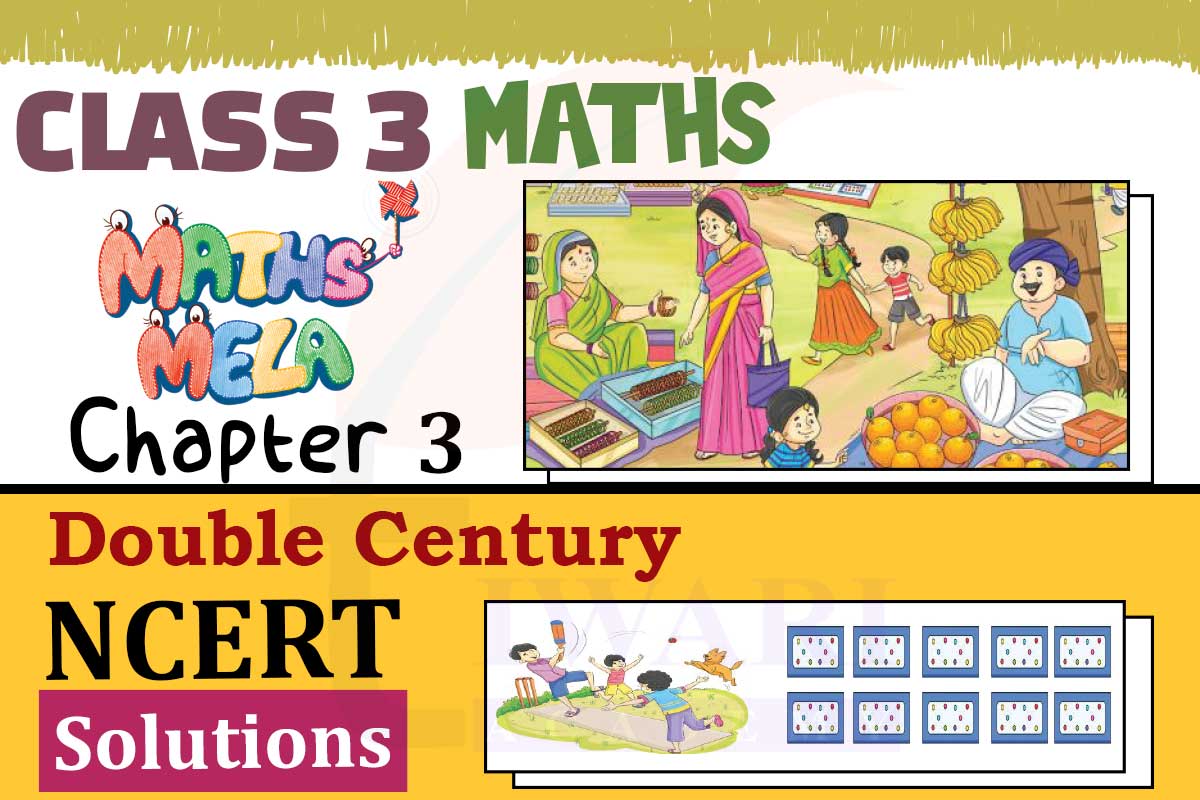
The Power of Zero
A crucial part of this numerical system was the introduction of the symbol “0” to represent “nothing.” The inclusion of zero transformed the way numbers were written and calculated, making the system more efficient and versatile. The chapter 3 emphasizes how the use of zero made it possible to write large numbers and perform complex calculations, which are fundamental to our daily lives. Students will learn how this simple symbol has profound implications in various fields, including science, engineering, and technology.
Estimation and Counting
The chapter 3 of 3rd mathematics also focuses on practical applications of numbers through estimation and counting activities. Students are encouraged to estimate the number of objects such as oranges, bangles, laddoos, and barfis. These exercises help develop their ability to make quick and reasonable guesses, a skill useful in everyday situations. By comparing their estimates with actual counts, students improve their understanding of numbers and their confidence in handling large quantities.
Building Numbers
One of the key learning objectives in this chapter is to understand how to build and break down numbers using bundles and loose sticks. For example, making 100 using various combinations of smaller numbers helps students grasp the concept of place value and the base-10 system. Activities involving matchsticks, bindis, and other objects illustrate how numbers can be grouped and represented in different ways. These hands-on experiences make abstract mathematical concepts more tangible and easier to comprehend.
Exploring Patterns
The chapter 3 encourages students to explore numerical patterns and sequences. By filling in missing numbers on a board or number line, students learn to recognize and extend patterns. This skill is crucial for solving more complex problems in higher mathematics. The activities also include playing games like Snakes and Ladders, which make learning numbers fun and interactive. Understanding patterns helps students predict and calculate outcomes, enhancing their problem-solving abilities.
Practical Applications
Towards the end of the chapter, students engage in activities that connect mathematics to real-life scenarios. For example, estimating and counting seeds or matchsticks in a container teaches them how to apply mathematical concepts in everyday tasks. These exercises underscore the relevance of mathematics beyond the classroom, preparing students for practical challenges. The chapter concludes with a focus on writing and understanding numbers beyond 100, setting the stage for more advanced topics in future lessons.
In summary, Class 3 Maths Mela Chapter 3 Double Century provides a comprehensive and engaging exploration of numbers, their history, and their practical applications. Through a mix of historical context, hands-on activities, and real-life applications, students gain a deeper understanding of numbers and their significance in the world.
Related Links
